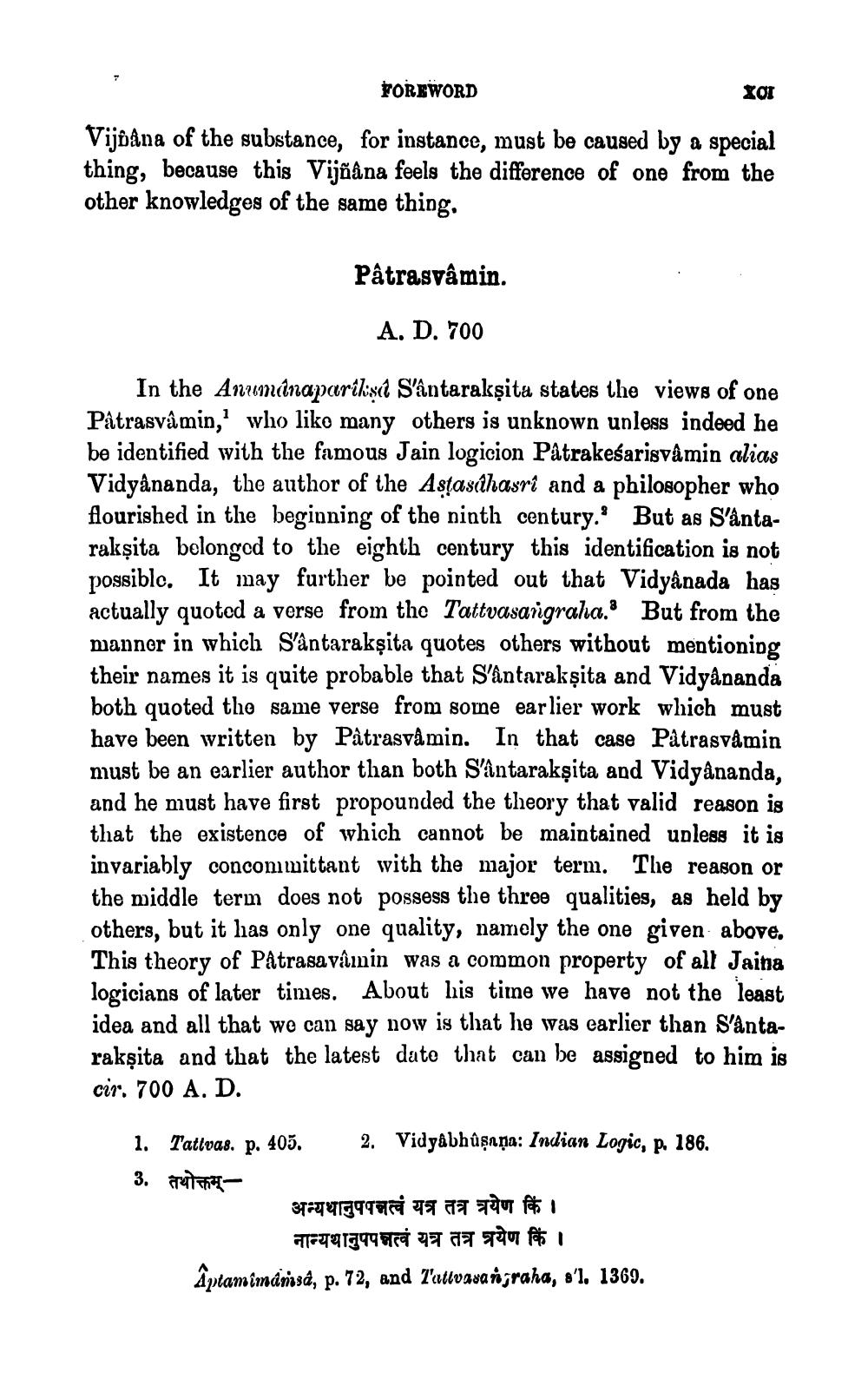________________
FOREWORD
XO Vijöåna of the substance, for instance, must be caused by a special thing, because this Vijõâna feels the difference of one from the other knowledges of the same thing.
Pâtrasvâmin.
A. D. 700
In the Anumarapariksi S'ântarakṣita states the views of one Påtrasvâmin,' who liko many others is unknown unless indeed he be identified with the famous Jain logicion Påtrakeśarisvâmin alias Vidyananda, the author of the Astasthasri and a philosopher who flourished in the beginning of the ninth century. But as Santarakṣita belonged to the eighth century this identification is not possiblc. It may further be pointed out that Vidyânada has actually quoted a verse from the Tattvasangraha. But from the manner in which S'ântarakṣita quotes others without mentioning their names it is quite probable that Slantarakṣita and Vidyananda both quoted the same verse from some earlier work which must have been written by Påtrasvå min. In that case Påtrasvåmin must be an earlier author than both S'antarakṣita and Vidyananda, and he must have first propounded the theory that valid reason is that the existence of which cannot be maintained unless it is invariably concommittant with the major term. The reason or the middle term does not possess the three qualities, as held by others, but it has only one quality, namely the one given above. This theory of Påtrasa våmin was a common property of all Jaina logicians of later times. About his time we have not the least idea and all that we can say now is that he was earlier than S'antarakṣita and that the latest date that can be assigned to him is cir. 700 A. D.
1. Tattvas. p. 405. 2. Vidyabh ûşnņa: Indian Logic, p. 186. 3. eta
अन्यथानुपपनत्वं यत्र तत्र त्रयेण किं ।
नान्यथानुपपनत्वं यत्र तत्र त्रयेण किं । Aptamimânsă, p. 72, and l'attvasanzraha, o'l. 1369.




